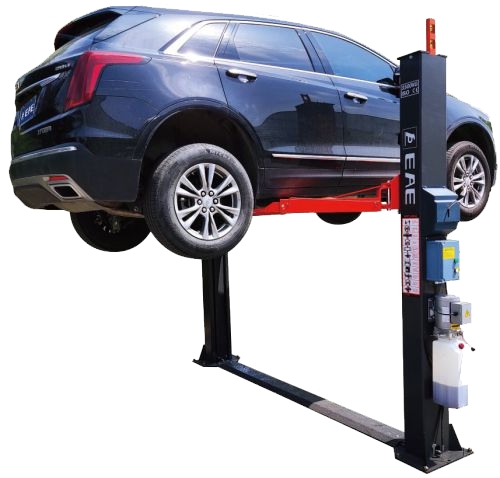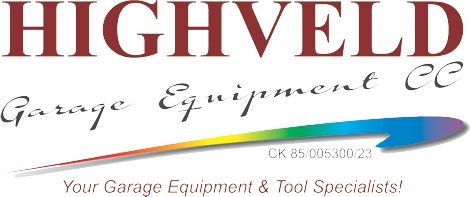
Welcome to our guide on understanding car lift safety standards in South Africa! In this section, we’ll delve into the regulations and best practices that govern the use of car lifts in automotive workshops. Whether you’re a seasoned mechanic or new to the industry, it’s crucial to prioritize safety when operating these essential pieces of equipment.
Regulatory Framework
In South Africa, car lift safety is regulated by the Occupational Health and Safety Act (OHSA) and the Driven Machinery Regulations (DMR), specifically Section 18. These regulations outline requirements for equipment maintenance, operator training, and workplace safety standards to ensure the safe use of car lifts in workshops.
Get the full details on the OHSA of South Africa.
Best Practices
In addition to regulatory requirements, there are several best practices that workshop owners and technicians should follow to maintain a safe working environment. Regular inspections of the car lift, including checking for hydraulic leaks, worn cables, and damaged components, are essential to identify potential hazards before they cause accidents. Furthermore, providing comprehensive training to staff on the proper use of car lifts and implementing clear operational procedures can minimize the risk of incidents.
Safety Precautions
When using a car lift, it’s crucial to observe safety precautions to protect yourself and others in the workshop. Always ensure that the vehicle is positioned correctly on the lift and that it does not exceed the lift’s weight capacity. Engage the safety locks to secure the lift in place before starting any work. Regularly inspect the lift for signs of wear and tear, and report any issues to management for prompt resolution.
Pre-Use Inspection Checklist for Your Car Lift
Before you hoist any vehicle onto your car lift, it’s essential to conduct a thorough pre-use inspection to ensure safety for you and your colleagues. By following this step-by-step guide, you can identify potential issues and prevent accidents in your workshop.
1. Visual Inspection
Start by visually inspecting the entire car lift structure, including the columns, arms, and hydraulic components. Look for any signs of damage, such as cracks, rust, or hydraulic leaks. Ensure that all safety labels and warning signs are visible and legible.

2. Mechanical Check
Next, perform a mechanical check of the lift’s operation. Test the lift’s hydraulic system by raising and lowering the arms several times, listening for any unusual noises or vibrations. Check that the lift responds smoothly to commands and that all controls are functioning correctly.
3. Safety Features
Verify that all safety features are in good working condition. Test the safety locks by engaging and disengaging them while the lift is in operation. Ensure that the lift’s limit stop mechanism activates properly if it reaches the maximum height or the maximum height for the specific vehicle.
4. Structural Stability
Inspect the anchoring points of the car lift to ensure that they are secure and stable. Check the floor beneath the lift for any signs of cracking or unevenness that could compromise its stability. If necessary, consult with a qualified technician to assess the structural integrity of the lift and its installation.

5. Documentation Review
Finally, review the lift’s maintenance and inspection records to ensure that it has been properly maintained and serviced according to manufacturer recommendations. Keep a log of your pre-use inspections and any maintenance tasks performed, including the date and details of the inspection.
By following this pre-use inspection checklist before operating your car lift, you can minimize the risk of accidents and ensure a safe working environment for yourself and your colleagues. Remember, safety always comes first in the workshop, so take the time to conduct thorough inspections and address any issues promptly.
Mastering Proper Lifting Techniques
When it comes to positioning vehicles on your car lift, mastering proper lifting techniques is essential for safety and efficiency in your workshop. By following these simple yet effective techniques, you can ensure that vehicles are safely hoisted onto the lift without risk of damage or injury.
1. Positioning the Vehicle
Start by positioning the vehicle in front of the lift, ensuring that it is centered and aligned with the lift’s arms. Use a spotter to guide you if necessary, especially when working with larger or heavier vehicles. Take your time to ensure that the vehicle is properly aligned before driving between the pillars into position.
2. Engaging the Lift Arms
Once the vehicle is in position, position the lift arms by carefully moving them underneath the vehicle. Make sure the lifting pad is directly underneath the correct jacking point or strong flat surface on the chassis of the vehicle. Avoid round or angled surfaces as the risk of the vehicle sliding off the lifting pad will be increased in these positions. Adjust the lifting pad height by using the adjustment screws or height adjustment spacers. Do not use loose rubber blocks to adjust the height of the lifting pad.
3. Adjusting the Lift Height
Once the vehicle is securely positioned on the lift, adjust the lift height to the appropriate level for the intended maintenance or repair work. Use the lift controls to raise or lower the lift platform as needed, taking care to maintain a level position throughout the process. Avoid exceeding the lift’s weight capacity or raising the vehicle higher than necessary to prevent instability or tipping.
4. Securing the Vehicle
With the vehicle properly positioned and the lift height adjusted, it’s time to secure the vehicle in place before beginning any work. Double-check that all safety locks and restraints are engaged before proceeding with any work underneath the vehicle. For added safety lower the lift onto the mechanical safety locks to ensure that the vehicle is secure and safe to proceed underneath the vehicle.
5. Safety First
Above all, remember that safety should always be your top priority when working with car lifts. Take the time to familiarize yourself with the specific operating instructions and safety features of your lift, and always follow recommended safety protocols. By mastering proper lifting techniques and prioritizing safety in your workshop, you can ensure a smooth and accident-free experience for yourself and your colleagues.
Crafting Your Emergency Response Plan for Car Lift Accidents
In any automotive workshop, having a solid emergency response plan in place is essential for ensuring the safety of your team and customers. Follow these steps to create a comprehensive plan for responding to accidents or malfunctions involving car lifts.
1. Establish Clear Communication Channels
The first step in your emergency response plan is to establish clear communication channels within your workshop. Ensure that everyone knows how to report emergencies and that there are designated individuals responsible for coordinating the response.
2. Train Your Team
Ensure that all workshop staff members are trained in emergency procedures and know how to respond effectively in case of an accident or malfunction. Conduct regular training sessions and drills to reinforce these protocols and keep them fresh in everyone’s minds.
3. Develop Response Protocols
Create step-by-step protocols for responding to different types of emergencies involving car lifts, such as vehicle entrapment, hydraulic failure, or structural collapse. Specify roles and responsibilities for each team member and outline the necessary actions to take in each scenario.
4. Coordinate with External Resources
In addition to internal response procedures, establish protocols for coordinating with external resources such as emergency services or technical support from lift manufacturers. Ensure that contact information for these resources is readily available and easily accessible.
5. Practice Regularly
Regular practice and drills are key to ensuring that your team is prepared to respond effectively in an emergency. Schedule regular practice sessions to simulate various emergency scenarios and evaluate the effectiveness of your response protocols.
6. Review and Update
Periodically review and update your emergency response plan to incorporate any lessons learned from drills or real-life incidents. Stay informed about industry best practices and regulatory requirements to ensure that your plan remains current and effective.
Conclusion
As you’ve explored the various aspects of car lift safety, it’s evident that prioritizing safety in your automotive workshop is paramount. Understanding industry regulations and adhering to best practices outlined by South African OHSA ensures compliance and promotes a safe working environment.
Implementing a pre-use inspection checklist and following proper lifting techniques are essential steps in maintaining the safety of your car lifts. Regular inspections and adherence to safety protocols minimize the risk of accidents and malfunctions, safeguarding both your team and your customers.
In the event of an emergency, having a well-defined emergency response plan is crucial. By establishing clear procedures and training your team accordingly, you can effectively manage emergencies and mitigate risks.
To further enhance safety in your workshop, we recommend booking a professional service. To ensure that the lifts you’re using conform to South African OHSA standards. Prioritizing safety not only protects your team and customers but also fosters a culture of accountability and responsibility in your workshop.
